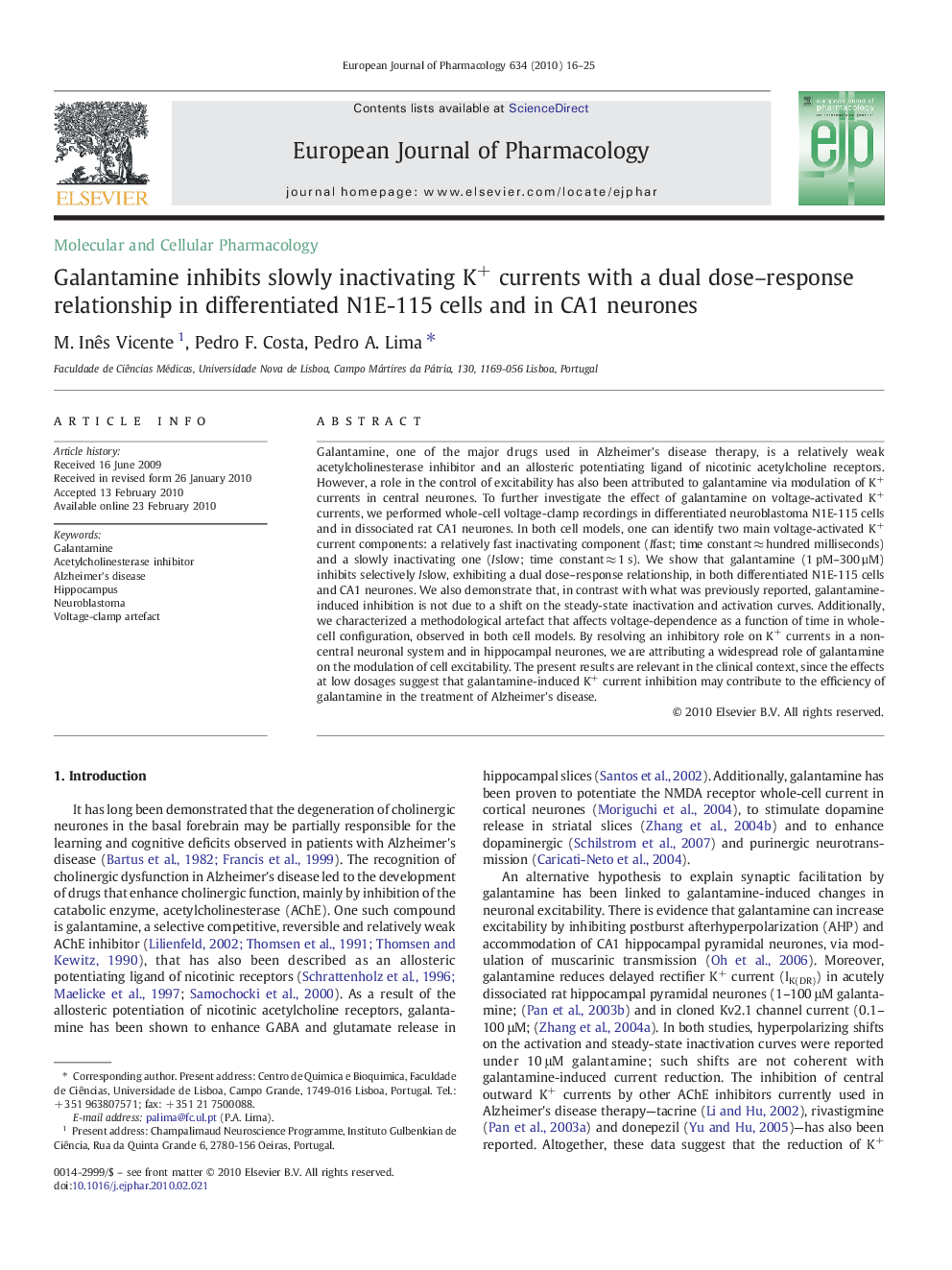| Article ID | Journal | Published Year | Pages | File Type |
|---|---|---|---|---|
| 2533551 | European Journal of Pharmacology | 2010 | 10 Pages |
Galantamine, one of the major drugs used in Alzheimer's disease therapy, is a relatively weak acetylcholinesterase inhibitor and an allosteric potentiating ligand of nicotinic acetylcholine receptors. However, a role in the control of excitability has also been attributed to galantamine via modulation of K+ currents in central neurones. To further investigate the effect of galantamine on voltage-activated K+ currents, we performed whole-cell voltage-clamp recordings in differentiated neuroblastoma N1E-115 cells and in dissociated rat CA1 neurones. In both cell models, one can identify two main voltage-activated K+ current components: a relatively fast inactivating component (Ifast; time constant ≈ hundred milliseconds) and a slowly inactivating one (Islow; time constant ≈ 1 s). We show that galantamine (1 pM–300 µM) inhibits selectively Islow, exhibiting a dual dose–response relationship, in both differentiated N1E-115 cells and CA1 neurones. We also demonstrate that, in contrast with what was previously reported, galantamine-induced inhibition is not due to a shift on the steady-state inactivation and activation curves. Additionally, we characterized a methodological artefact that affects voltage-dependence as a function of time in whole-cell configuration, observed in both cell models. By resolving an inhibitory role on K+ currents in a non-central neuronal system and in hippocampal neurones, we are attributing a widespread role of galantamine on the modulation of cell excitability. The present results are relevant in the clinical context, since the effects at low dosages suggest that galantamine-induced K+ current inhibition may contribute to the efficiency of galantamine in the treatment of Alzheimer's disease.
